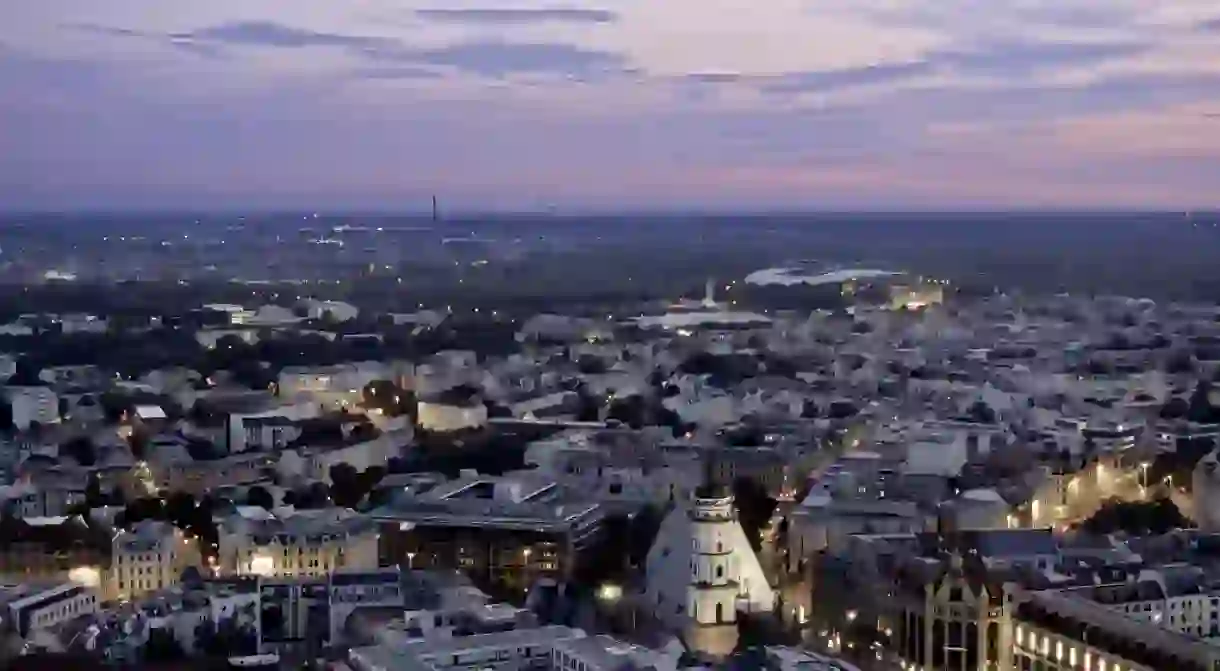8 Reasons Why Leipzig is the New Berlin

When the Berlin Wall came down 28 years ago, things did not look good for the beleaguered city of Leipzig. The East German city had been a major stop on the trade circuit since the Middle Ages and later became Germany’s undisputed manufacturing center. But then buildings were abandoned and left to ruin, industries had become irrelevant or had left town, and more than 100,000 people—25 percent of its current population—left the city to find work elsewhere. Fast forward to the turn of the third millennium and life is creeping back into the city, much in the same way Berlin was transformed in the late ’90s and early 2000s.
For tourists, this means that the vibe in town is electric. Entrepreneurs, artists, musicians, writers, and all manner of other young and ambitious people are taking advantage of the cheap—or even free—rent to create all sorts of new enterprises. Pop-ups and experiments abound. This once proud, independent city (unlike neighboring Dresden, Leipzig never had an Elector) is rising once again. Here are eight reasons why feisty, scrappy Leipzig—the city of music (and of heroes)—is the place to be right now.

Cheap rent
Think Detroit in the early 2000s—that was the situation in Leipzig from the late ’80s to early 2000s. Desolate, despondent and, in many places, literally in ruins. But people who aren’t wage slaves have the time and the will to experiment and create and make their surroundings better. For tourists, this means Leipzig is a great place to hang out for a while without totally bankrupting yourself. This loft in the super-hip Plagwitz neighborhood, for example is just €30 per night.
A growing population
In 1930, Leipzig’s population was over 700,000. In the intervening years, some pretty major things happened, which, combined with the decline of the manufacturing industry and the massive difference in prosperity between East and West Germany, caused the population to fall by nearly 40 percent.
In 2000, things started to turn around. Young people came back or moved to town for the first time. They created jobs and started business ventures that boosted the local economy. In June 2017, unemployment was down to 7.6 percent—still double the national rate, but a big improvement on 2003’s 18.2 percent. For tourists, more people with better jobs means more spare money to maintain the fun things in the city.
A great university
The University of Leipzig was founded in 1409 and has taught the brightest young minds for more than 600 years including the likes of Goethe and Angela Merkel. The city has also fed, watered, and entertained students since before Machu Picchu was built. Cheap accommodation, coffee shops in which to debate the finer points of life, and cheap places to eat are as perfect for the modern traveler/nomad as they were in the Middle Ages.

Clubs & music venues
With so much other exciting stuff going on, it is no surprise that Leipzig’s club scene is kicking it as well. New club experiments and original parties take advantage of derelict buildings to pop up in random locations around town, while well-established venues on the scene, like the Distillery, are the foundation on which all others are built.
Thriving creative scene
Leipzig has long been a center of art, music, poetry, and other such creative pursuits. JS Bach, Mendelssohn, Schumann, Weber, Wagner, and Mahler all lived and worked in the city. Schiller wrote “Ode to Joy” while he was visiting. After Reunification, a group of artists, including Neo Rauch, Christoph Ruckhäberle, and Matthias Weischer, as well as Tim Eitel, Tilo Baumgärtel, Christian Brandl, Ulf Puder, Rosa Loy, and Axel Krause became part of what would be called the New Leipzig School. Since then, the street art scene has been thriving and the warehouses of Plagwitz are full of ateliers.

Entrepreneurs
The buzz in Leipzig combined with the university and cheap real estate is a magnet for start-ups. The risks of experimenting are low and the potential rewards high. Well-educated employees willing to work more cheaply than they would in Cologne or Munich are easy to find in town, and the private Leipzig Graduate School of Management is acquiring a reputation for churning out many successful company founders and product developers.

Subcultures
Dresden, an hour east of Leipzig and the capital city of the state of Saxony, had Prince Elector, which means that while the state opera house and art collections are insane, the rest of the city is a sort of middle class, civil servant bubble, like Bonn. Leipzig, on the other hand, has been in the middle of two major trade routes since the Roman Empire. Leipzigers are used to strangers coming to town and are OK with it. Even Goths. For 20 years, Leipzig has been home to the world’s largest Gothic festival, the annual Wave-Gotik-Treffen.
It has an excellent zoo
Zoos are for grown-ups too, and the one in Leipzig is the second best in Europe, surpassing the Berlin Zoo for the first time. If that’s not an indicator that the Haupstadt is over, it is difficult to say what could be. It was Heidi, a crossed-eyed opossum that brought Leipzig Zoo onto the world stage, but in 2017, the story is all about baby tigers. There are also sharks. And pygmy hippos.













